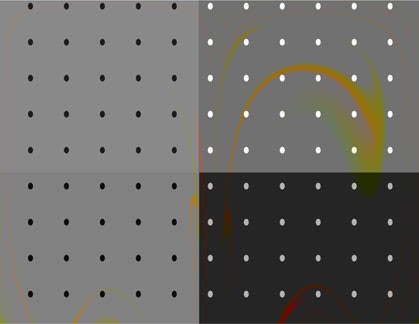
We first trained human participants to expect a specific outcome stimulus when they performed a particular motor action in response to a visual cue ( Supplementary Fig. As an initial step toward establishing a role for pattern completion in predictive coding, we test the relationship between representations in CA3–CA1 and V1–V2 during mnemonic expectation. The completed representation is transferred to the CA1 subfield and then is output to cortical regions, with visual components reinstated in areas V1 and V2 of early visual cortex 12, 13. This occurs through recurrent connectivity in the CA3 subfield of the hippocampus, which allows activity to spread from the partial input to other inputs with which it was bound during encoding. One candidate retrieval mechanism is pattern completion in the hippocampus 9– 11, whereby exposure to part of a past experience activates a conjunctive representation of the entire experience. Specifically, mnemonic expectations require retrieval of past experiences in order to anticipate upcoming information in sensory areas. The often-arbitrary nature of mnemonic expectations requires a different mechanism than feedback from adjacent areas.

Predictive coding models say little about how mnemonic expectations arise. Mnemonic expectations can influence activity in the same areas of early visual cortex as perceptual expectations 8. In the example above, the name of the street you turned on has no inherent connection to the look of an upcoming building, despite the former being predictive of the latter on a known route. Mnemonic expectations differ from perceptual expectations because expected stimuli need not physically resemble current stimuli and are instead expected based on prior co-occurrence 6, 7. For example, when turning at a familiar intersection, we anticipate the identities of buildings and streets that will come into view. Second, we form ‘mnemonic’ expectations about what new stimuli are likely to appear in the near future. These signals modulate sensory representations, accounting for neurophysiological findings in areas V1 and V2 such as contour filling-in 4 and motion anticipation 5. Hierarchical models of predictive coding explain how such expectations arise, with feedback signals carrying information about expected levels of activity in earlier layers of visual cortex 1– 3. For example, when driving, we anticipate the locations of signs and cars in our field-of-view at the next moment.

First, we form ‘perceptual’ expectations about how current stimuli move or change over time. Our readers have come to expect excellence from our products, and they can count on us to maintain a commitment to producing rigorous and innovative information products in whatever forms the future of publishing may bring.At least two kinds of expectations guide perception.

Through our commitment to new products-whether digital journals or entirely new forms of communication-we have continued to look for the most efficient and effective means to serve our readership. Since the late 1960s, we have experimented with generation after generation of electronic publishing tools.

The Press's enthusiasm for innovation is reflected in our continuing exploration of this frontier. We were among the first university presses to offer titles electronically and we continue to adopt technologies that allow us to better support the scholarly mission and disseminate our content widely. Among the largest university presses in the world, The MIT Press publishes over 200 new books each year along with 30 journals in the arts and humanities, economics, international affairs, history, political science, science and technology along with other disciplines.


 0 kommentar(er)
0 kommentar(er)
